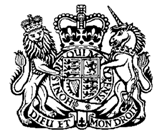Kent County Council (Filming on Highways) Act 2010
2010 CHAPTER iv
An Act to confer powers on Kent County Council in relation to filming on highways; and for related purposes.
[27th July 2010]
Whereas—
It is expedient that the powers of Kent County Council (hereinafter referred to as “the Council”) should be extended and amended as provided in this Act:
It is expedient that provision be made in relation to filming on highways in Kent:
It is expedient that the other provisions contained in this Act should be enacted:
The purposes of this Act cannot be effected without the authority of Parliament:
In relation to the promotion of this Act the Council has complied with the requirements of section 239 of the Local Government Act 1972 (c. 70):
May it therefore please your Majesty that it may be enacted, and be it enacted, by the Queen’s Most Excellent Majesty, by and with the advice and consent of the Lords Spiritual and Temporal, and Commons, in this present Parliament assembled, and by the authority of the same, as follows:—
1Citation
This Act may be cited as the Kent County Council (Filming on Highways) Act 2010.
2Interpretation
In this Act—
“the 1984 Act” means the Road Traffic Regulation Act 1984 (c. 27); and
“the Council” means Kent County Council.
3Prohibition or restriction on roads in connection with filming
(1)Section 16A of the 1984 Act (prohibition or restriction on roads in connection with certain events) shall apply to the Council with the following modifications.
(2)The expressions “relevant event” and “the holding of a relevant event” include the making of a film.
(3)After subsection (2), the following subsection is inserted—
“(2A)The traffic authority for a road may at any time by notice restrict or prohibit temporarily the use of the road, or any part of it, by vehicles, or vehicles of any class, or by pedestrians, where it appears to them that it is expedient for the making of a film and that the restriction or prohibition should come into force without delay.”.
(4)The references, in subsections (3), (5) and (7) to (10), to an order under section 16A include references to a notice under subsection (2A) of that section, as inserted by subsection (3) above, and references to the making of such an order include references to the issuing of such a notice.
4Restrictions on orders and notices
(1)Section 16B of the 1984 Act (restrictions on orders under section 16A) shall apply in the county of Kent with the following modifications.
(2)In subsection (1) after the words “three days” the words “(or seven days, in the case of a film order)” are inserted.
(3)In subsection (6) the words “Subject to subsection (6A),” are inserted at the beginning.
(4)After subsection (6), the following subsections are inserted—
“(6A)No more than six film orders may be made under section 16A in any calendar year so as to affect any length of road.
(6B)No film notice shall continue in force for more than 24 hours from the time at which it comes into effect.
(6C)As soon as reasonably practicable and in any event not less than 24 hours before the time at which it is to come into effect, a film notice shall be posted at each end of the road, or the part of the road, that is the subject of the notice.
(6D)In this section, “film orders” and “film notices” are orders and notices under section 16A of this Act which are made or issued in relation to the making of a film.”.
(5)In subsection (7), for “subsection (6)” there is substituted “subsections (6) and (6A)”.
5Power to place objects on highways
(1)Subject to the provisions of this section, the Council, as highway authority, may grant permission for any person making a film to place temporarily on the highway any object or thing required for the purposes of making a film.
(2)A person making a film shall not, in pursuance of a grant of permission under this section, place any object or thing on a bridge over a railway, or under a bridge carrying a railway over a highway or a public open space, or within four metres of the abutments of a bridge carrying a railway over a highway or a public open space, except with the consent of the railway undertakers concerned.
(3)In exercising their functions under this section the Council—
(a)shall take steps to prevent, so far as reasonably practicable, interference with vehicular and pedestrian traffic using the highway; and
(b)shall not grant any permission which would have the effect of obstructing or rendering less convenient—
(i)the access to or exit from premises belonging to canal, inland navigation, dock, harbour, tramway, or statutory undertakers, or persons authorised by any enactment to carry on any other public undertaking; or
(ii)the use by those undertakers or persons of such premises for the purposes of their undertaking.
(4)In subsection (3) above, “statutory undertakers” means any of the following—
(a)a licence holder within the meaning of Part 1 of the Electricity Act 1989 (c. 29);
(b)a public gas supplier within the meaning of Part 1 of the Gas Act 1986 (c. 44);
(c)a water undertaker within the meaning of the Water Industry Act 1991 (c. 56);
(d)a sewerage undertaker within Part 1 of the Water Industry Act 1991;
(e)a local authority which is a relevant authority for the purposes of section 97 of the Water Industry Act 1991.

